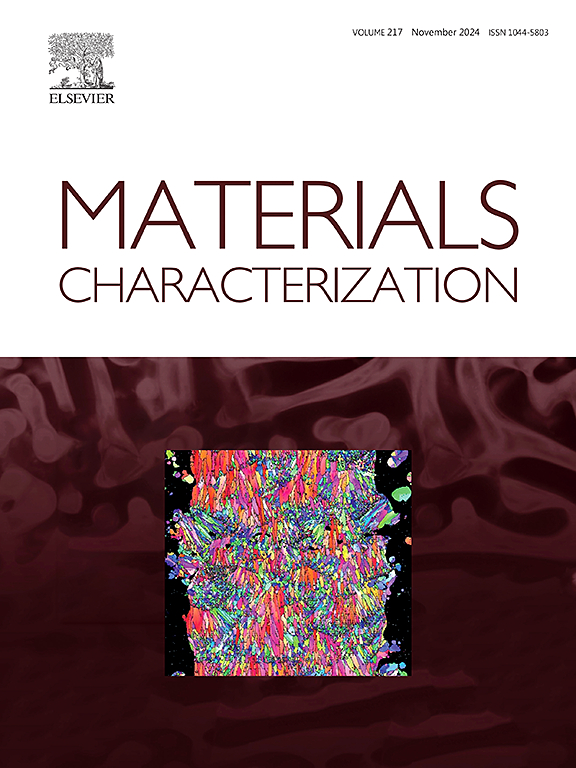Superior combination of strength and ductility in gradient-structured Cu-Ge alloy
IF 4.8
2区 材料科学
Q1 MATERIALS SCIENCE, CHARACTERIZATION & TESTING
引用次数: 0
Abstract
The microstructures and mechanical properties of gradient Cu-9.0 at.%Ge alloy produced by surface mechanical attrition treatment (SMAT) with different durations at the liquid nitrogen temperature have been investigated. In the process of SMAT, the gradient distribution of defects, including dislocations, twins, and stacking faults was formed. The SMATed alloy showed more than twice the yield strength, while the uniform elongation remained as much as ∼0.65, comparable to that in the untreated samples, suggesting excellent strength-ductility synergy. Multiple strengthening mechanisms promoted strengthening and hardening, including dislocation pile-up, deformation twinning, and stacking faults. The accommodation deformation between the surface hard and central soft layers induced strain delocalization. The strength-ductility synergy of the alloy is attributed to the high strain hardening rate caused by hetero-deformation-induced (HDI) hardening, strain delocalization, and synergistic strengthening. The study provides new insights and guidelines for the future design of gradient materials.
求助全文
约1分钟内获得全文
求助全文
来源期刊

Materials Characterization
工程技术-材料科学:表征与测试
CiteScore
7.60
自引率
8.50%
发文量
746
审稿时长
36 days
期刊介绍:
Materials Characterization features original articles and state-of-the-art reviews on theoretical and practical aspects of the structure and behaviour of materials.
The Journal focuses on all characterization techniques, including all forms of microscopy (light, electron, acoustic, etc.,) and analysis (especially microanalysis and surface analytical techniques). Developments in both this wide range of techniques and their application to the quantification of the microstructure of materials are essential facets of the Journal.
The Journal provides the Materials Scientist/Engineer with up-to-date information on many types of materials with an underlying theme of explaining the behavior of materials using novel approaches. Materials covered by the journal include:
Metals & Alloys
Ceramics
Nanomaterials
Biomedical materials
Optical materials
Composites
Natural Materials.
 求助内容:
求助内容: 应助结果提醒方式:
应助结果提醒方式:


